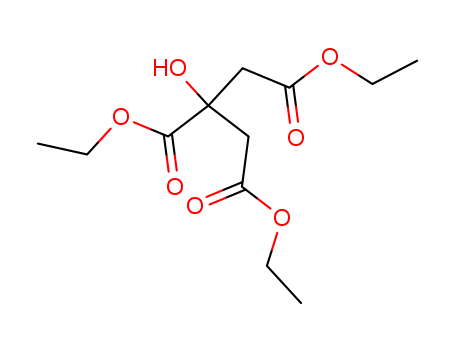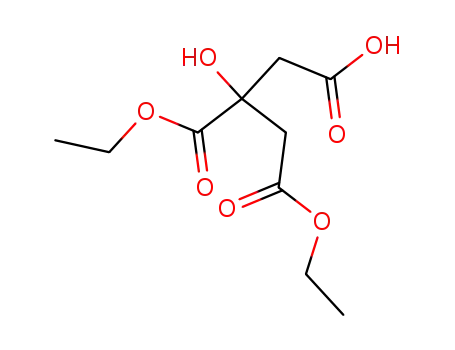
Antioxidant BHT 264
CAS:128-37-0
Purity:99%
Contact Now
We will contact you as soon as possible
Your Location:Home >Products >High-Tech New Material >77-93-0


Product Details
|
Production Methods |
Triethyl citrate is prepared by the esterification of citric acid and ethanol in the presence of a catalyst. |
|
Preparation |
By esterification of ethyl alcohol with citric acid. |
|
General Description |
Triethyl citrate is a safe direct food additive. |
|
Pharmaceutical Applications |
Triethyl citrate and the related esters acetyltriethyl citrate, tributyl citrate, and acetyltributyl citrate are used to plasticize polymers in formulated pharmaceutical coatings. The coating applications include capsules, tablets, beads, and granules for taste masking, immediate release, sustained-release, and enteric formulations. Triethyl citrate is also used as a direct food additive for flavoring, for solvency, and as a surface active agent. |
|
Safety Profile |
Moderately toxic by intraperitoneal route. Mildly toxic by ingestion and inhalation. Combustible liquid when exposed to heat or flame. To fight fire, use dry chemical, CO2. When heated to decomposition it emits acrid smoke and irritating fumes. See also ESTERS and CITRIC ACID. |
|
Safety |
Triethyl citrate is used in oral pharmaceutical formulations and as a direct food additive. It is generally regarded as a nontoxic and nonirritant material. However, ingestion of large quantities may be harmful. LD50 (mouse, IP): 1.75 g/kg LD50 (rat, IP): 4 g/kg LD50 (rat, oral): 5.9 g/kg LD50 (rat, SC): 6.6 g/kg |
|
storage |
Triethyl citrate should be stored in a closed container in a cool, dry location. When stored in accordance with these conditions, triethyl citrate is a stable product. |
|
Incompatibilities |
Triethyl citrate is incompatible with strong alkalis and oxidizing materials. |
|
Regulatory Status |
GRAS listed. Accepted for use as a food additive in Europe. Included in the FDA Inactive Ingredients Database (oral capsules and tablets). Included in the Canadian List of Acceptable Nonmedicinal Ingredients. |
InChI:InChI=1/C12H20O7/c1-4-17-9(13)7-12(16,11(15)19-6-3)8-10(14)18-5-2/h16H,4-8H2,1-3H3
The invention discloses a citrate plasti...
The invention relates to a method for pr...
A process for the preparation of methyls...
The invention designs a synthetic method...

ethanol


citric acid


citric acid triethyl ester
| Conditions | Yield |
|---|---|
|
ethanol;
With
dicyclohexyl-carbodiimide;
at 20 ℃;
for 36h;
Large scale;
citric acid;
at 35 ℃;
for 6h;
Temperature;
Autoclave;
Large scale;
|
96% |
|
With
sulfonated graphene;
In
neat (no solvent);
at 90 ℃;
for 4h;
|
94% |
|
With
boric acid; benzenesulfonic acid;
at 85 - 90 ℃;
for 3h;
|
93.26% |
|
With
sodium hydrogensulfate monohydrate;
at 80 - 90 ℃;
Reagent/catalyst;
Temperature;
|
90.2% |
|
With
toluene-4-sulfonic acid;
In
toluene;
at 90 - 110 ℃;
for 4h;
|
86.3% |
|
With
1-ethyl-(3-(3-dimethylamino)propyl)-carbodiimide hydrochloride;
at 75 ℃;
for 3h;
|
85% |
|
With
carbonic acid dimethyl ester;
at 180 ℃;
for 5h;
under 10343.2 Torr;
Reagent/catalyst;
Temperature;
Inert atmosphere;
|
55.8% |
|
With
hydrogenchloride;
|
|
|
With
hydrogenchloride;
in mehreren Stufen;
|
|
|
With
sulfuric acid; 1,2-dichloro-ethane;
|
|
|
With
folate;
|
|
|
With
sulfuric acid; toluene;
|
|
|
With
sulfuric acid;
at 0 - 80 ℃;
for 4h;
|
|
|
With
toluene-4-sulfonic acid;
at 60 - 135 ℃;
Concentration;
Temperature;
Further stages;
Autoclave;
|
|
|
With
nanometer intercalation hydrotalcite catalyst with [PW11CoO39]5- polyacid;
at 100 - 105 ℃;
Reagent/catalyst;
Temperature;
|
|
|
With
benzene;
azeotrope Destillation;
|
|
|
With
toluene-4-sulfonic acid;
In
cyclohexane; water;
at 110 ℃;
for 4h;
|

ethanol


citric acid


Diethyl 2-methylsuccinate


citric acid triethyl ester
| Conditions | Yield |
|---|---|
|
With
hydrogen;
In
water;
at 200 ℃;
for 6h;
under 3000.3 Torr;
|
19 %Spectr. |

diethyl 1,3-acetonedicarboxylate

formic acid ethyl ester

ethanol

citric acid

rac-4-oxocyclopentane-1,2-dicarboxylic acid

3-Hydroxy-3,4-bis(ethoxycarbonyl)butanoic acid

Diethyl-3-(ethoxycarbonyl)pent-2-endioat

triethyl O-acetylcitrate